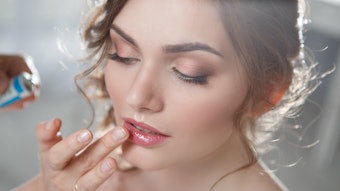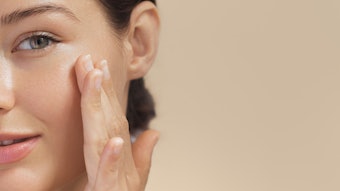
A new study from P&G Beauty & Grooming and lead investigator Nancy Etcoff, PhD, assistant clinical professor at Harvard University and associate researcher at Massachusetts General Hospital Department of Psychiatry, confirms for the first time that using color cosmetics does, in fact, significantly alter how women are perceived by others, even at very first glance. Results of the study, published on October 3, 2011, in PLoS ONE, show that makeup application specifically impacts judgments of attractiveness and character when viewed rapidly or for unlimited amounts of time.
View the multimedia assets associated with this release.
Researchers conducted two studies in which 100 photos of 25 women's faces were judged without makeup and with three different applied makeup looks that included varying levels of luminous contrast (different levels of light to dark makeup shades). The looks were informally classified as "natural," "professional" and "glamorous."
When viewed for 250 milliseconds, all three makeup looks increased ratings of attractiveness, competence, likability and trust compared to the ratings of the same faces without makeup (all p < .0001).
Further, participants in the second study who had unlimited time to inspect the faces gave both the natural and professional makeup looks increased ratings of attractiveness, competence, likability and trust (all p < .0001). The glamorous look, which had the highest luminous contrast, was judged to be equally likeable, less trustworthy and significantly more attractive and competent (p < .0001) than the faces without makeup. The reverse connotations associated with this look demonstrate that makeup impacts both automatic, instinctual responses and conscious, deliberative judgments, causing people to make impressions based on the visual alterations caused by cosmetics and their conscious ideas about makeup users and looks.
"Researchers have studied first impressions of innate facial characteristics, such as facial symmetry, but until now, no research has rigorously examined the role that applied beauty or features of the extended human phenotype, such as makeup and hair color, play in perception of beauty, personality and character at first glance and longer inspection," says Etcoff. "For the first time, we have found that applying makeup has an effect beyond increasing attractiveness--it impacts first impressions and overall judgments of perceived likeability, trustworthiness and competence. In today's world of self-portraits appearing on networking and dating websites, ballots, resumes and applications, the results of the study have broad implications."
Sarah Vickery, PhD, principal scientist, research & development, Color Cosmetics, P&G Beauty & Grooming, believes the data's implications also suggest makeup can give women the power to determine which aspects of their personality they want communicated to others.
"This study examined the impact of relevant makeup looks that women in the Western world commonly wear, showing that makeup is a real-life tool in their arsenal to effectively control the way they want to be—-and are—-perceived," says Vickery. "Makers of color cosmetics and other beauty products can take these findings into consideration to further develop science-based solutions that empower women to display different aspects of their personalities and to really take charge of the way others see them."
Detailed study methodology
The study was conducted in two parts with 100 high-resolution color images of 25 women, ages 20–50, who self-identified as Hispanic, Caucasian or African-American. The images included a frontal head shot with a neutral facial expression and were cropped to remove clothing and hair styles.
A makeup artist applied three different makeup looks that provided increasing luminance contrast between the skin and facial features (informally labeled as "natural," "professional" and "glamorous"). A professional photographer shot the women without makeup and with all three looks under uniform conditions, and the photos were adjusted digitally.
The first study included 149 adults (61 men, 88 women) of different ages and ethnicities who were shown the faces for 250 milliseconds. The second study included 119 adults (30 males, 89 females) of different ages and ethnicities who were given unlimited time to inspect each face. All participants saw the faces in a randomized sequence and rated them based on attractiveness, likeability, trustworthiness and competence. "Collaborating with global academic and industry experts has allowed P&G Beauty & Grooming scientists to transform cutting-edge color science into solutions for skin, cosmetic and hair color products," said Shekhar Mitra, Senior Vice President, P&G Global Beauty & Grooming Research & Development. "This fundamental research helps us better understand the motivations and desired beauty outcomes of our consumers and how to translate that knowledge into innovations that have a proven impact on perception."










